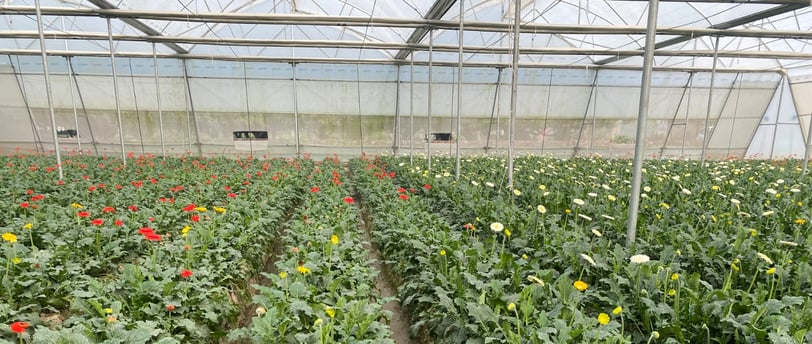Getting Started with Polyhouse Farming
Learn the basics of polyhouse farming and how to set up your own polyhouse structure.
What is Polyhouse Farming?
Polyhouse farming represents a modern agricultural practice that involves cultivating crops within a controlled environment under a specially designed structure, typically constructed with polyethylene material. This method allows farmers to manipulate various environmental factors, such as temperature, humidity, and light intensity, optimizing conditions for crop growth.
Benefits of Polyhouse Farming
Economic Benefits
Polyhouse farming presents a multitude of economic advantages. Firstly, it extends the cropping season, enabling year-round cultivation and consequent multiple harvests. Moreover, the controlled environment minimizes crop losses due to adverse weather conditions or pest attacks, ensuring a steady income for farmers.
Environmental Benefits
This innovative technique significantly reduces water consumption by enabling efficient irrigation methods, such as drip irrigation and hydroponics. Additionally, the controlled conditions reduce the need for pesticides and fertilizers, making polyhouse farming an environmentally friendly alternative to traditional agriculture.
Types of Polyhouses
Naturally Ventilated Polyhouses
These structures leverage natural airflow for temperature regulation, offering a cost-effective solution suitable for regions with moderate climates.
Fan and Pad Polyhouses
Utilizing fan systems combined with evaporative cooling pads, these polyhouses maintain controlled temperatures, ideal for areas with extreme weather conditions.
Choosing Suitable Crops
Factors for Crop Selection
Factors such as climatic conditions, market demand, and investment capabilities play a pivotal role in selecting crops for polyhouse cultivation.
Popular Crops for Polyhouse Farming
Crops like tomatoes, cucumbers, bell peppers, and roses flourish in polyhouse environments, fetching premium prices in markets due to their consistent quality.
Setting Up a Polyhouse
Location Selection
Choosing an appropriate site considering sunlight exposure, wind direction, and accessibility is crucial for successful polyhouse farming.
Construction Material
Selecting durable yet cost-effective materials ensures the longevity and functionality of the polyhouse structure.
Equipment Needed
Essential equipment includes temperature and humidity controllers, irrigation systems, and shading nets, essential for maintaining optimal conditions.
Maintenance
Climate Control
Regular monitoring of temperature and humidity levels alongside adequate ventilation ensures a conducive environment for plant growth.
Pest and Disease Management
Implementing integrated pest management techniques and adopting organic farming practices curtails the risks associated with pests and diseases.
Irrigation Techniques
Drip Irrigation
Efficient water usage through targeted irrigation, delivering water directly to the plant roots, is pivotal in polyhouse farming.
Hydroponics
Cultivating plants in nutrient-rich water solutions without soil provides an innovative approach to irrigation, fostering vigorous plant growth.
Marketing Strategies
Local Market vs. Export
Understanding market dynamics aids in formulating strategies to sell produce locally or target international markets for higher returns.
Branding and Packaging
Quality branding and attractive packaging enhance product visibility and marketability, attracting discerning customers.
Financial Planning
Initial Investment
The initial setup cost involves construction, equipment procurement, and infrastructure development, necessitating a comprehensive financial plan.
Expected Returns
Though initial investment may seem substantial, the potential for consistent, high-quality yields translates into promising returns over time.
Challenges Faced
Initial Challenges
Learning the intricacies of polyhouse farming and adapting to new technologies and methodologies can pose initial challenges for farmers.
Long-term Sustainability
Maintaining consistent yields, managing operational costs, and adapting to market changes are key factors influencing long-term sustainability.


